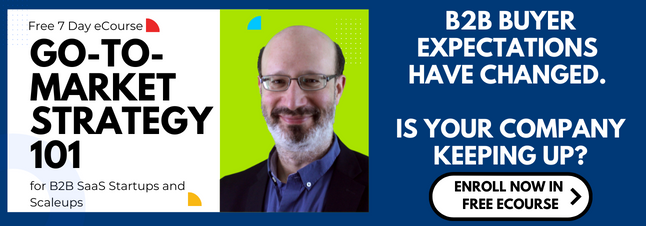Progressive profiling can help your company stay with future customers throughout their buyer’s journey (and beyond). Yet relatively few tech startups use progressive profiling to improve prospect engagement with less friction at the conversion point.
In this blog post, you’ll learn why progressive profiling helps provide a more delightful experience for your prospects and customers, how to implement progressive profiling for buyer’s journey acceleration, and what simple yet highly effective progressive profiling looks like.
Many of your prospects, your future customers, research and make purchase decisions vastly differently than they did just a few short years ago.
- Gartner found that 83% of a typical B2B purchase decision -- researching, comparing options, and evaluating pricing -- happens before a potential buyer engages with a vendor.
- McKinsey & Company has discovered that 70% to 80% of B2B decision-makers now prefer to make decisions digitally.
- In its B2B Thought Leadership Impact Report, LinkedIn, in partnership with Edelman, concluded that “thought leadership remains critical to customer engagement but breaking through the noise is harder than ever.”
What does this mean for the typical B2B buyer’s journey describing how a prospect progresses from awareness to consideration and beyond?
When it comes to advancing through the buyer's journey:
When someone advances from an awareness stage offer to a consideration stage offer and then onto a decision stage offer, you’re no longer dealing with a stranger.
If you successfully intercept this person early in their journey, ideally in the awareness stage or pre-awareness, you’ve already started building relationship equity.
Zapier defines progressive profiling as " asking customers to provide small bits of information throughout their customer journey. This allows you to create more detailed user profiles….”
With the right marketing automation software, you can save prospects, future customers, time and ask additional questions when using the progressive profiling features of the software. Progressive profiling reduces friction at the conversion point, improves conversion rates and overall unit economics, and provides a more delightful experience for prospects and customers.
What does progressive profiling look like in practice?
For example, in the consideration stage of the buyer’s journey, you’d ideally like to ask every prospect for their Job Role in a drop-down list.

However, you also have a segment of prospects acquired from a conference sponsorship. Job Role data is already imported into your CRM's relevant contact records.
With progressive profiling, you don’t make those prospects repeat themselves when you already know their job roles.
Instead, as those prospects arrived at the decision stage of the buyer's journey, your marketing technology software would, instead of asking for Job Role data that you already have rather, ask for something more probing at the decision stage -- such as a Budget Range or Purchase Timeframe -- so your sales team can better qualify this prospect.
And if you’re serious about Progressive Profiling and the Buyer’s Journey...
Learn more when you enroll now in our free 7-day eCourse: Go-to-Market Strategy 101 for B2B SaaS Startups and Scaleups.


